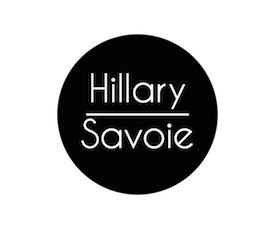November is National Epilepsy Awareness Month. I thought it would be appropriate to spend some time here talking about epilepsy.
I’m not going to hit you with the stats about how many people live with epilepsy and all of that. However, you can check out some information like that on this pdf from the Epilepsy Foundation if you are interested.
What I want to talk about what it means to live with epilepsy for our family…and how epilepsy, which can be so varied and variable, manifests itself in our world. I will deal with this topic in a few parts. In this first post I will begin by explaining the onset of Ezzy’s seizures…what we began seeing and when and how long it took to get to the place where we started calling her seizures what they where.
The first time we saw Ezzy have a seizure was over a year ago, after being out somewhat late for my cousin’s rehearsal dinner before his wedding. We had an exciting and active evening. And Ezzy fell asleep in the car ride home. We pulled into our parking spot at home, and we standing outside the car talking to each other when we both caught a glimpse of Ezzy’s hands and feet shaking. It was subtle, but being the parents we are we quickly descended upon her, talking to her, trying to get her attention. She seemed distant in those few seconds, and then it was done. We were suspicious that it was a seizure, so we called her then neurologist. He said that based on our description it was not a seizure, but ordered an EEG anyway.
When the EEG came back grossly normal we were told not to worry. He said that people with seizure disorders have clearly abnormal EEGs, even in between seizures.
Months went by with her having a handful of funny shaky moments, primarily upon waking or drifting off to sleep. We discussed them, but felt sure we were being over protective and overly anxious.
Then the day after Christmas I came home after my Dad had been watching her for a few hours. He seemed worried about a “spell” she had. He said that she had appeared to stop breathing and turned blue. I wasn’t worried because I figured that it was just a breath-holding spell…something else she does regularly! But she did it several more times throughout the day. This was clearly different from the breath-holding spells–which we always anger-induced. And while she did seem to tremble, the turning blue was the primary symptom. Finally she had one that was severe enough that we called 911 because we thought she might not start breathing again.
Although she seemed okay by the time the ambulance arrived, we still brought her in. She had another episode in the ER, which was observed by an ER nurse. The nurse called what she observed a seizure. It was also clear that she was desating (her blood oxygen levels were dropping) and her heart rate was very high during the events…as is typical for seizure. When we said as much to the attending neurologist we were told that ER nurses often mistook seizures and that the EEG would tell us what was going on. In retrospect this is hysterical, because it was the clinical diagnosis of seizure that was ultimately helpful for us, and it was the tools of diagnosis that were muddying the water. That ER nurse was more right than almost any doctor we saw until March. And thus began our long trip of periodically referring to these events as seizures and then, after being chastised by one doc or another, switching to episode, event, spell….
Ezzy stayed in the PICU for several days, under observation and EEG monitoring. The doctors felt (from the start, really) that it was something called neurological reflux (reflux causing movements that are often mistaken for seizure), and despite the fact that neurological reflux typically causes a heart rate decrease it was an assumption that appeared to be supported by another “normal” EEG. We were sent home on increased reflux meds with instructions that if these events kept happening that she would need further surgery to correct her nissen and move her feeding tube to her intestines.
Around three weeks later the spells started happening again. After observing seven in close succession I called my husband and told him to come home from work because we were bringing her out to the large Children’s Hospital about three hours away…where her main GI and pulmonary doctors are. Fortunately I had caught two episodes on video, and once we were admitted a pulmonary doctor and a handful of nurses also observed one. Everyone there agreed the episodes looked like seizure and the description sounded like seizure, but after 72 hours of EEG monitoring her brain patterns still appeared normal.
The attending neurologist there began to suggest that perhaps our local hospital was right, that it was neurological reflux…or that perhaps she had a neuro-muscular behavior that was looking like a seizure. They referred us to a new neurologist who specializes in neuromuscular disorders.
Upon final report, several weeks later, the doctors found some minor evidence of an unusual pattern. But, as is the case with so many things with our kiddo, it was unclear exactly what this pattern meant and whether it was significant.
Luckily, our new neurologist (the neuromuscular specialist who is the hero in so many of our stories) felt this pattern, combined with the clinical evidence of seizure based on our description and video documentation, was sufficient to diagnose seizures and to begin treating with our first seizure medication, keppra.
As she said, we know most people’s EEGs look a certain way between seizures if they have a seizure disorder. But not all of them do. And until we could catch an event on EEG we would do what people do in places without access to EEG machines, diagnose the seizures clinically.
Just to give you an idea of the timeline here, we saw the first potential “seizure” in September. We were given a prescription for anti-convulsants at the end of March…after seeing no less than four attending neurologists (plus their gangs of fellows and residents) in patient and out at two hospitals. I don’t blame these doctors for being skeptical given Esmé’s EEGs, but it is a lesson in listening to knowledgable parents as well as in not being blinded by the tools of modern medicine–especially in the face of as variable and poorly understood disease as epilepsy.


We had the same issues in getting a seizure dx and meds. With kids it seems they rely on the technology too much and not parents. But we are the ones who live with them 24/7 and (unfortunately) know what we are talking about.